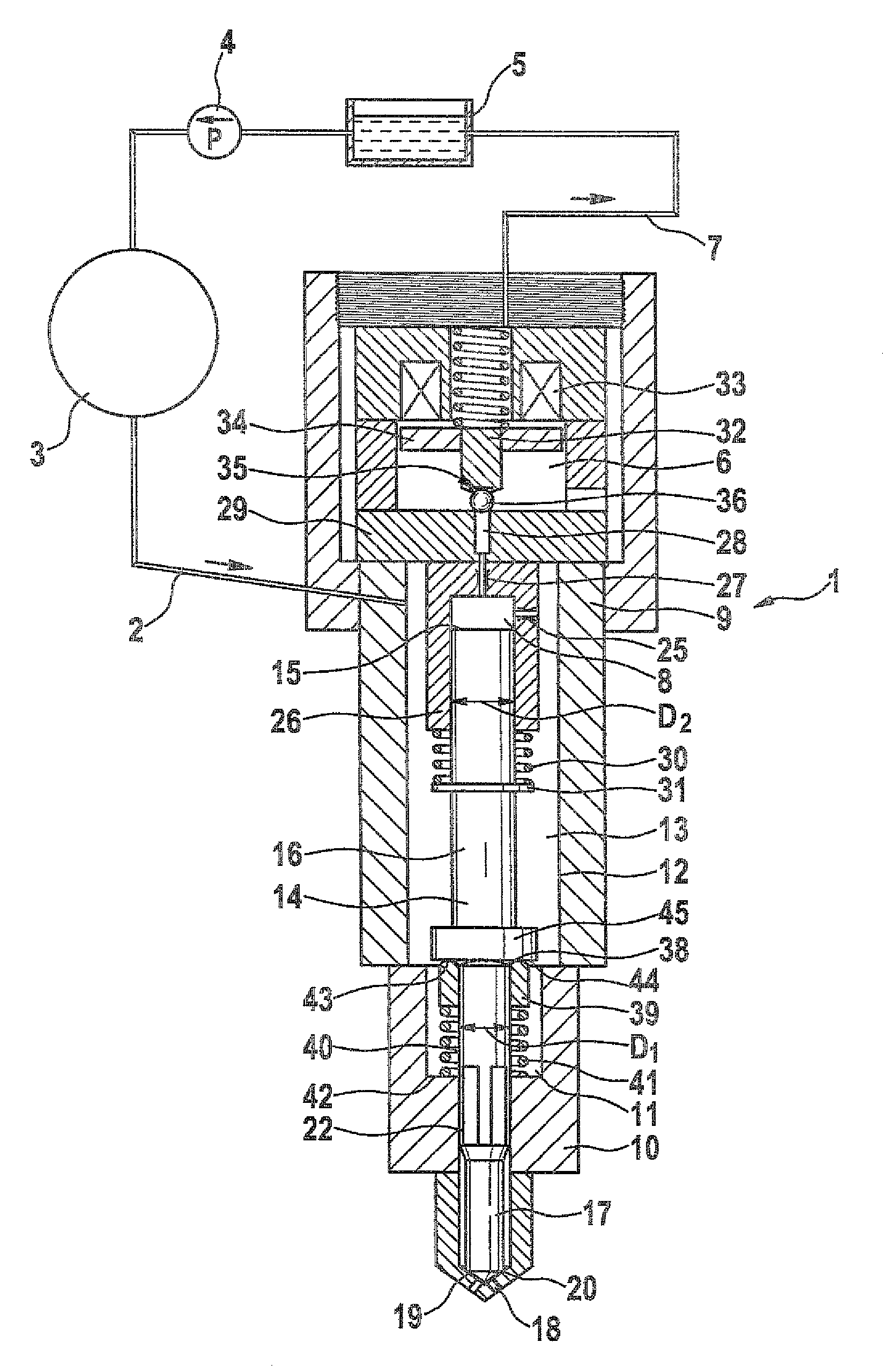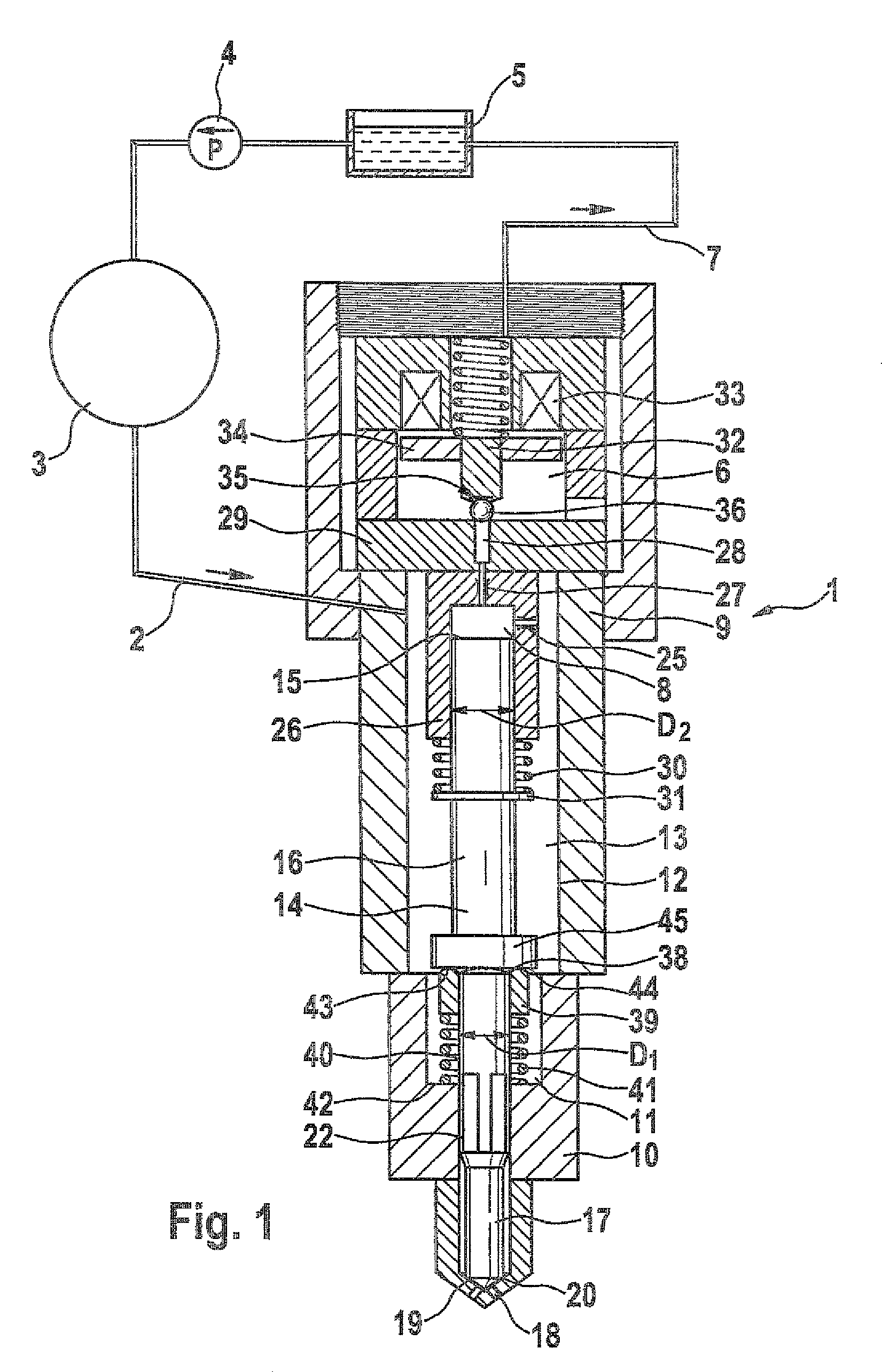Injector for injecting fuel into combustion chambers of internal combustion engines
a technology of injector and combustion chamber, which is applied in the direction of fuel injector, machine/engine, liquid fuel feeder, etc., can solve the problems of high leakage loss, achieve low leakage loss, reduce production cost, and tight tolerance
- Summary
- Abstract
- Description
- Claims
- Application Information
AI Technical Summary
Benefits of technology
Problems solved by technology
Method used
Image
Examples
Embodiment Construction
[0018]Components that are the same and those that serve the same functions have been labeled with the same reference numerals in the drawings.
[0019]FIG. 1 shows a common rail injector 1 for injecting fuel into combustion chambers of internal combustion engines. The injector 1 is supplied with fuel, in particular diesel or gasoline, at high pressure (approx. 1800 to 2000 bar) from a high-pressure fuel reservoir 3 (rail) via a high-pressure supply line 2. A high-pressure pump 4 embodied in the form of a radial piston pump supplies the high-pressure fuel reservoir 3 with fuel from a storage tank 5 that is at low pressure. A low-pressure region 6 of the injector is hydraulically connected to the storage tank 5 via a return line 7. Depending on the operating state, the pressure in the low-pressure region of the injector lies between approximately 0 and 10 bar. The return line 7 conveys a control quantity of fuel away from a control chamber 8 and supplies it to the high-pressure circuit v...
PUM
 Login to View More
Login to View More Abstract
Description
Claims
Application Information
 Login to View More
Login to View More - R&D
- Intellectual Property
- Life Sciences
- Materials
- Tech Scout
- Unparalleled Data Quality
- Higher Quality Content
- 60% Fewer Hallucinations
Browse by: Latest US Patents, China's latest patents, Technical Efficacy Thesaurus, Application Domain, Technology Topic, Popular Technical Reports.
© 2025 PatSnap. All rights reserved.Legal|Privacy policy|Modern Slavery Act Transparency Statement|Sitemap|About US| Contact US: help@patsnap.com



